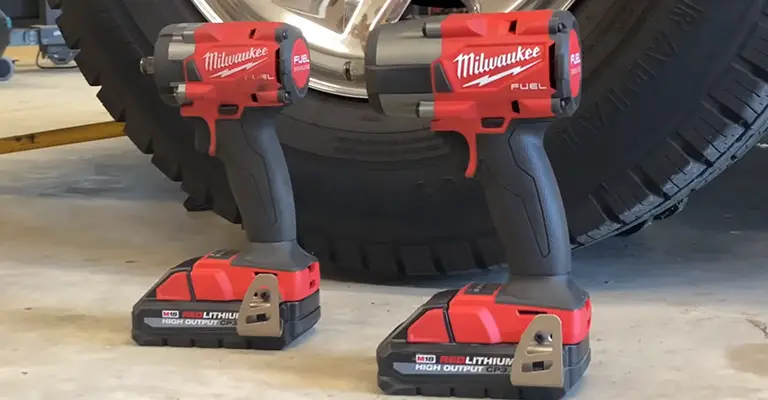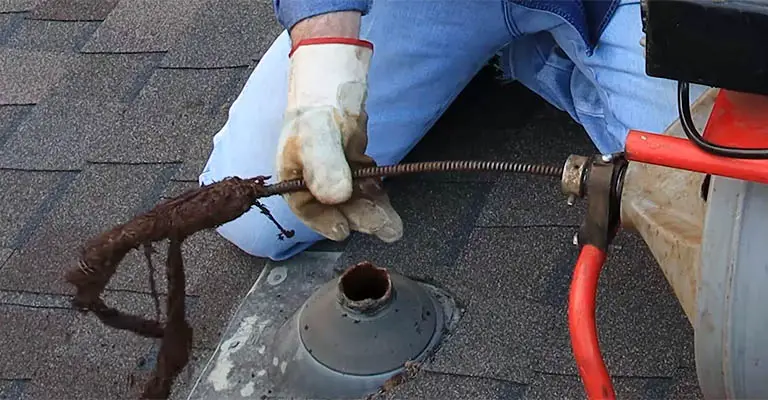1/4 Inch vs 1/2 Inch Impact Driver
Over the past decade, power tools have become a necessity in our everyday life. Even though, both the ¼ inch impact driver and ½ inch impact wrench can pretty much do the same type of work and they are both power-tools, the drive size is the real difference between them. The ¼’’driver has a slightly smaller drive than the ½’’ wrench.
Let’s take a look at different aspects of their application and functionality to know which one is the one you need.
1/4 Inch vs 1/2 Inch Impact Driver
Impact driver and impact wrenches are both impact power tools. Initially, they both can seem pretty similar as they are used to do the same type of works. However, depending on the size and many other factors, ¼’’ impact drivers and ½’’ impact wrenches can differ a lot from each other. So, let’s find out.
Here are the top two of the best selling 1/4 inch impact drivers:
DEWALT 20V MAX XR Impact Driver, 3-Speed, 1/4-Inch Milwaukee M18 Fuel Hex Hydraulic Driver, 1/4″
Application
Because of the smaller drive, ¼ impact drivers are used for fitting and removing screws and small fastening. So, they are very effective while working on home improvement projects like installing a combustion air vent where you need to work with smaller tools. You can still use the 1/4’’ impact driver for automotive projects to some extent.
On the other hand, ½ impact wrenches are great for working on vehicles and automotive works. Generally, in these kinds of projects, you need to fasten and remove large bolts and nuts. ½’’ impact wrenches can easily remove large lug nuts and bigger bolts without any complication.
However, if you want to use the ¼ inch impact driver to remove lug nuts on vehicles, you will have to use an impact grade adapter. But it may still damage your impact driver. Besides, they may not even do the works properly which can cause further problems. For example, loose nuts in vehicles can lead to accidents.
Torque
Torque is one of the main factors in comparing these two power- tools. The 1/2″ impact wrench has a much higher torque than the 1/4″ impact driver. So, you can easily use it for removing large nuts and screws in automotive works. They can also be used for any other high-torque job such as removing lawn mower blades.
On the other, the ¼ inch impact drivers have a lower torque than the ½ inch impact wrenches. so, they can’t provide as much power as the wrenches. this is why the ¼ inch impact drivers are suitable for less heavy-duty work such as small fastening and removing.
It may still be possible to do some heavy-duty works with a ¼ inch impact driver. but it is more likely to damage the tool so it’s not recommended.
Functionality And Precision
You can drill holes using a 1/4” impact driver. It has a set of different adaptive tools that can provide a wide range of functionality. With proper tools and adjustments, you can drill a hole in light-gauge steel or wood with it. On the other hand, ½’’ can be used for some small drill bits but it may not do a great job.
Moreover, the 1/4″ impact driver is much lighter than the 1/2″ impact wrench because of its smaller size. With less weight, the 1/4″ is easier to hold and use. So, you can work with more precision. But, ½’’ are heavier and can be a bit difficult to hold for a long time which can easily affect the precision of the work.
Electric vs Air Impact Wrench
Air impact wrenches are powered with air and the electric wrenches are powered by electricity. Generally, the air-powered tools tend to be more powerful so they are better suited for professional use. Also, these tools are heavier than electric powered impact tools so they are useful for heavy-duty work.
Now, the ½ inch impact wrenches can be both air-powered and electric. So, you can choose either of the two types according to your requirement. However, the ¼ inch impact drivers are powered by electricity. so, they are less powerful than the air impact wrenches. Also, you may not find a ¼ inch driver that’s air-powered.

Price
Both 1/4″ impact drivers and 1/2″ impact wrenches come in the same price range. The prices may differ depending on the brands. Most power tools from top-tier manufacturers are a bit more expensive than other cheap brands. But, for a specific brand, the prices of these two impact tools don’t vary that much.
18v vs 20v Batteries
For battery-powered impact drivers and wrenches, there are mainly two types-18v battery and 20v battery. Both the ½ inch impact wrenches and ¼ inch impact drivers are available with these two types of batteries.
However, there is not much difference between these two types of batteries. The power output is pretty much the same for both batteries. But, tools with 20v batteries are heavier than those with 18v. The cost may also vary with them.
So, you can find both the ½’’ wrench and 1/4’’ driver with the two types of batteries. But, if there is no other exceptional functionality included, you shouldn’t jump to buy a 20v tool at a higher price.
Impact Driver vs Impact Wrench
The first difference is exactly what their name suggests. One is the ¼ inch impact driver and the other one is the ½ inch impact wrench. Even though they are both power-tools, there is a size difference between them.
¼ impact drivers have smaller drives than ½ impact wrenches. So, when you are working with smaller screws and bolts, ¼ impact driver is the better option. On the other hand, ½ impact wrenches are comparatively larger than the other one. So, they are used for working with larger nuts and bolts.
Frequently Asked Question
Question: Between a ½’’ wrench and ¼’’ driver, which one can work on a bolt faster?
Answer: for the same type of bolt, the ½’’ wrench can fasten or loosen the bolt faster than a ¼’’ wrench because of its higher torque. It also depends on the RPM of the tool.
Question: What is an impact socket adapter?
Answer: Impact socket adapters are used at the drive end of impact sockets to fit an impact power wrench having a different drive size.
Conclusion
Your choice between a 1/4 inch and 1/2 inch impact driver should be dictated by your specific project needs. While a 1/2 inch cordless impact driver provides more power, making it an excellent choice for heavy-duty tasks, the compact design and control of a 1/4 inch corded impact driver makes it ideal for smaller, detailed jobs. The 1/2 inch drivers are particularly beneficial when used with impact sockets, ensuring a smooth and efficient transfer of force for tougher jobs.
Corded impact drivers can offer a consistent level of power, while cordless impact drivers provide portability and convenience for any on-the-go tasks. Whichever option you choose, both the 1/4 inch and 1/2 inch impact drivers have their unique strengths, making them valuable tools in your collection. The key is to understand your project requirements and choose accordingly for optimal results. The versatility of both tools underlines the importance of having the right equipment for the task at hand.
Remember, whether you opt for corded or cordless, 1/4 inch or 1/2 inch, each impact driver type plays a unique role in your toolkit. Utilize the portability of the cordless drivers for off-site work, but don’t overlook the steady power of the corded ones when heavy-duty tasks arise. Be ready for any situation by investing in both types, enabling you to tackle any job with the right amount of power and precision.






